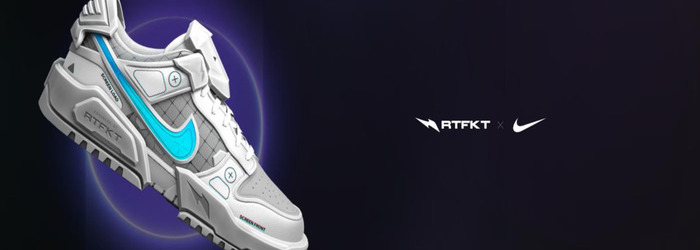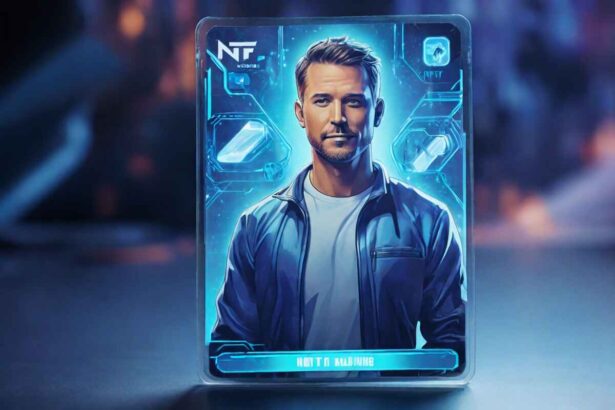Non-fungible tokens, or NFTs, have come a long way since their inception nearly a decade ago. From being viewed as purely digital art among avant-garde collectors to gaining mainstream adoption among the largest web2 companies, NFTs symbolize authentic proof of ownership of digital and physical items or assets of value through blockchain technology. With the entire sector reaching a fever pitch since the bull market of 2021, businesses globally are leveraging the appeal and power of NFTs to retain and attract a new generation of customers in the digital age. The NFT sector is entering a new frontier of phygital NFT experiences, one that combines the digital world with physical goods.
Phygital NFTs refer to non-fungible tokens that merge physical and digital components. Phygital NFTs create an experience that combines the ownership of physical or tangible items along with the immutable record of ownership and authenticity stored on the blockchain in the digital realm.
Understanding Phygital Experiences
The term phygital is an amalgamation of two words, ‘physical’ and ‘digital’. The concept of a phygital experience for consumers was coined in 2007 by Chairman-CEO at Momentum Worldwide, Chris Weil. Phygital refers to any product, service, or activity that combines the traditional physical world with digital technology.
Phygital experiences have been a predominant trend over the past decade, with the growth of products and services blurring the lines between the two worlds. For example, a customer ordering an item on their smartphone through an app (digital) to collect in-store (physical) typifies a phygital experience. Therefore, the proliferation of online shopping and delivery services has intensified the nexus between the physical and digital worlds.
Phygital NFTs
With the meteoric growth of NFTs as the future of providing authentic proof of ownership and provenance via blockchain technology, various NFT projects and established businesses are working in tandem to revolutionize the phygital experience narrative.
The term phygital NFTs refers to any physical product or experience that is either represented by or linked to a digital NFT. In essence, phygital NFTs exist in the digital realm on a blockchain network as a digital item while simultaneously having a corresponding tangible asset in the physical world. Both items in the distinct realms are linked as a single phygital NFT with a unique identifier, such as a QR code tag or embedded microchip.
Phygital NFTs not only bring a physical aspect to their digital product but also, importantly, bring a certificate of authentic ownership to the fore, thereby effectively eliminating counterfeiting concerns for the buyer. Additionally, brick-and-mortar businesses can reinvent fresh and different user experiences for their customers by incorporating NFTs. NFTs allow businesses to foster a sense of community and reward loyal customers. Brands can also use NFTs to provide unique access to and discounts on tangible products or services.
By offering an immutable record of ownership, phygital NFTs renovate the user experience for collectors or buyers. Additionally, it gives companies a chance to foster a communal environment among their customers while creating a new way to profit from the revenue these phygital experiences bring in.
Industries Adopting Phygital NFTs
The concept of NFTs and their applications continues to gain steam among traditional businesses. Popular web2 companies in the luxury, fashion, food, and beverages sectors have been quick to embrace the paradigm shift of incorporating phygital experiences for their customers via the trust-based and immutable characteristics of NFTs.
Some notable examples of services and brands that have entered the phygital NFT space include the following:
- Blockbar offers an NFT marketplace for luxury wines and spirits. Each NFT represents a physical bottle. The holder of the NFT owns the physical item that Blockbar stores. The NFT or digital version serves as a certificate of authenticity that mitigates counterfeit products, verification of ownership, and the right to have the physical bottles delivered.

- Nike has entered the phygital NFT landscape with RTFKT studios, an NFT sneaker and fashion studio, through the launch of its metaverse sneaker line RTFKT x Nike Dunk Genesis CryptoKicks. By purchasing one of these NFTs, individuals can wear their sneakers in the metaverse as digital items or collectibles while claiming the right to own the physical sneaker in the real world.
Major brands have progressed from simple PFP launches to issuing “phygital” collections: NFTs tied to physical assets.
In 2022, the trading volume for the fashion NFT sector was nearly $1.3B, the majority of which stemmed from the collaborative efforts between @Nike and @RTFKT. pic.twitter.com/xHvHmZi0sp
— Messari (@MessariCrypto) February 4, 2023
- Timex has forayed into the web3 space by offering phygital NFT experiences in partnership with the Bored Ape Yacht Club (BAYC) by Yuga Labs. Timex’s phygital NFT project offers exclusive one-of-a-kind physical timepieces that double up as digital NFT collectibles available for BAYC NFT owners.
- Metaverse fashion and phygital merchandise NFTs have taken the fashion industry by storm. According to Morgan Stanley, the metaverse could generate additional revenue of $50 billion in sales by 2030. Big players like Diesel, Givenchy, Dolce & Gabanna, Adidas, and Tiffany & Co, to name a few, are validating the shift towards phygital experiences in the fashion industry by using phygital NFTs to interact with their customers.
We’re taking NFTs to the next level. Exclusive to CryptoPunks holders, NFTiff transforms your NFT into a bespoke pendant handcrafted by Tiffany & Co. artisans. You’ll also receive an additional NFT version of the pendant. Learn more: https://t.co/FJwCAxw8TN #NFTiff #TiffanyAndCo pic.twitter.com/pyKlWejHv4
— Tiffany & Co. (@TiffanyAndCo) July 31, 2022Conclusion
The rise in the number of mainstream brands adopting a phygital experience through NFT technology is a testament to the widespread recognition of its potential in transforming community and marketing outreach initiatives. Phygital NFTs merge the digital and physical world while simultaneously providing the end user proof of authenticity. This opens up an exciting prospect for collectors with a new way to engage with their favorite creators and artists while eliminating any fears of counterfeiting or duplicity.
By bringing NFTs into the physical realm, phygital NFTs have paved the way for new use cases for NFTs. The concept of backing physical assets with a digital NFT twin has the potential to revolutionize industries across the board, especially where evidence of ownership and authenticity is becoming increasingly important. With the rise of blockchain technology and the soaring demand for verifiable ownership of assets, Phygital NFTs are primed to transform the way we interact with the digital world around us.




















